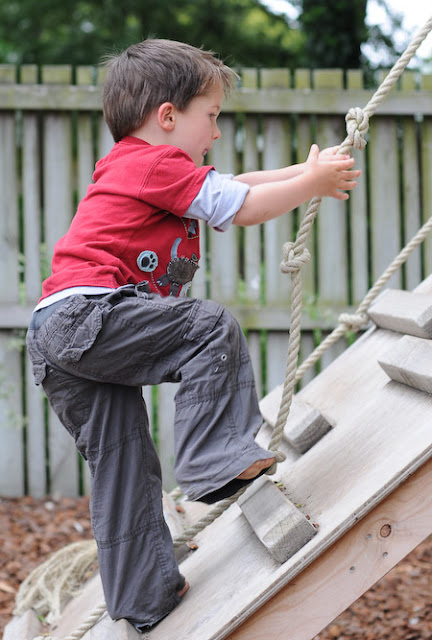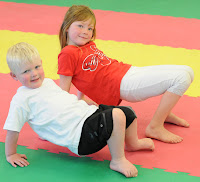This is an extract from an article we found really interesting and wanted to share with our whanau from the moving smart blogspot:
 |
|
| A child’s hand is a powerful tool for learning. With his hands he can control the world around him, build and create all that he can imagine, and express himself, first in gestures, then with scribbles, and eventually, with the written word.Parents know the importance of fine motor control — especially when it comes to handwriting — which is probably why I’m frequently asked for advice on this subject.Here’s what I say…Put your pencils down and go play on the monkeybars. |
NATURAL ORDER OF THINGS
Children’s muscle control and coordination is developed in a natural, orderly way — from the top down and from the inside out — starting at the head and working towards the toes while building out from the torso to the limbs. This order of priority, established by the brain, insures that the large muscles necessary for coordination and locomotion (getting from here to there) are well organized and in control, before taking on the complex mastery of the more than 60 combined muscles in the hands (let alone the dozens of bones, hundreds of ligaments and tendons, etc., etc.)
So you see, on the developmental totem pole, the hands come last.
 |
WHAT IS FINE MOTOR DEVELOPMENT?
Now, that doesn’t mean that your child’s hands aren’t active as he’s growing. Young hands begin with simple, reflexive, whole-hand grasping. Over time, early reflexes integrate and the pincer grip kicks in, allowing him to use his forefinger and thumb together in unison. Each day, you’ll see more and more deliberate hand and finger movements. But that’s not fine motor skills — not yet.
Fine Motor Skills are the highly precise motor control necessary to bring all five fingers together to do detailed work requiring minute, almost imperceptible movements, such as using a pencil to write your name.
But writing your name isn’t all in the wrist, so to speak. In fact, it involves much of the whole body…
|
IN ORDER TO WRITE MY NAME…
1. The upper body must be strong enough to hold the body in an upright standing or sitting position.
2. The shoulders muscles must be strong enough to control the weight of the arm, and flexible enough to rotate freely to position the arm for writing.
3. The upper arm holds the weight of the lower arm and hand, delivering the hand to the page.
4. The lower arm provides a sturdy fulcrum on which the wrist rotates.
5. The wrist holds the hand steady and rotates to the appropriate position.
6. The fingers fold around the pencil which is held in place by the thumb.
7. Together, all five fingers do a precision dance on the page: a. placing the pencil at the exact angle to meet the page, b. pressing down and maintaining the right amount of pressure to leave the imprint, and c. coordinating the tiny up, down, left, and right movements across the page.
If any of those muscles in that chain of events don’t do their job, writing his name will be a very hard thing to do.
Which brings us full circle back to the monkeybars…
Sometimes, it’s just not possible to make it over to the playground for a turn on the monkeybars,
so here are a couple of my favorites you can do at home to build upper body and core strength
while the hands “wait their turn” in the developmental chain of events.
so here are a couple of my favorites you can do at home to build upper body and core strength
while the hands “wait their turn” in the developmental chain of events.
For more information we recommend…..MOVING TO LEARN by Robyn Crowe and Gill Connell










